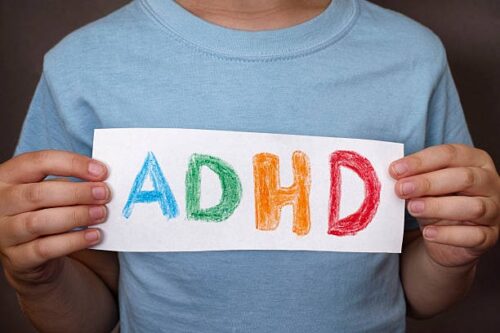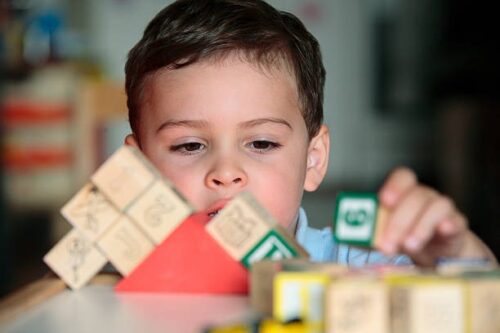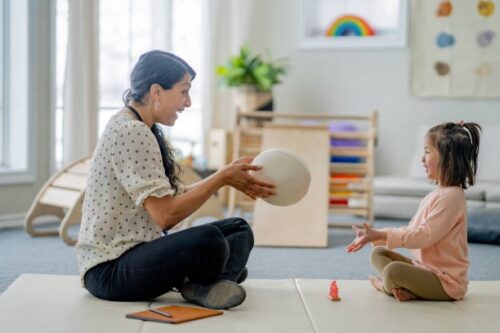Students with ADHD may struggle to concentrate, listen attentively, or work hard on their homework assignments. It may also cause a student to get upset, anxious, talk excessively, or disturb the special education classes. School aged children with ADHD tend also to experience difficulties attending school due to learning issues. Most children with ADHD begin schooling before receiving a diagnosis. Sometimes, the child’s teacher is the first one to see potential ADHD symptoms. They might discuss it with the parent of the youngster. Once attention deficit hyperactivity disorder has been ruled out, the parent can have the kids assessed by a medical professional.

Compared to typical students, kids who suffer from attention-deficit/hyperactivity disorder (ADHD) face additional challenges in their pursuit of success. Those diagnosed with ADHD may find it challenging to function successfully in school due to symptoms like inattention, restlessness, and trouble regulating impulses.
For this reason, individuals who work in school environments and child and adolescent psychology must understand how to modify assignments and the learning environment layout to accommodate students with ADHD or understand the importance of classroom interventions for autism. To successfully accommodate and adjust to the benefit of the students, teachers and support staff should be able to identify the symptoms of the disease, comprehend typical behaviors associated with ADHD, and offer acceptable accommodations.
Working With Children With ADHD
In daily life, ADHD affects social and cognitive performance. Someone who has been diagnosed with ADHD is prone to exhibit certain tendencies, like being impulsive. In this stage, they behave without thinking, cut off discussions, and show minimal to no fear. Another is hyperactivity, which includes excessive movement, constant fidgeting, and an inability to stay still. And lastly, the kids’ lack of focus and short attention span. Other children with ADHD are easily distracted, which makes it difficult for them to focus on activities and classroom responsibilities. They also frequently switch between activities and projects, act like they can’t follow directions, and must be reminded.
According to diagnostic and statistical manual experts, dealing with other kids who have ADHD can be difficult on different occasions. It’s especially challenging in a learning environment because restlessness, the inability to stay still, and general inattentiveness are easily identifiable. It can be annoying when students display the classic symptoms of attention deficit disorder, which include impulsivity, hyperactivity, and inattention. They can’t concentrate on the content you’re trying hard to give, even though you know they have the intelligence. Additionally, their actions interrupt the class, take attention away from learning, promote poor organizational skills or planning skills, and impact the child’s ability to concentrate.
When working with students who have ADHD, most teachers encounter some of the following challenges:
- Moving about the room or interrupting others to get their attention.
- Suffering from difficulties understanding and executing instructions, particularly when given in a list or when performing tasks that call for a set of stages, such as lengthy mathematical equation solving.
- Not remembering to turn in completed homework or to put assignments in writing.
- Fine motor control could be better, which makes taking notes and reading handwriting challenging.
- Encountering issues with extended projects without direct supervision.
- Failing to contribute during group projects could prevent a group or entire team from completing its goal.
ADHD-affected kids frequently suffer from poor academic performance, criticism and repercussions, peer bullying, and a lack of self-esteem as a result of their issues. As a consequence of your inability to assist the student with ADHD, you, as the teacher, end up receiving complaints from parents who believe their children have been overlooked in the classroom, which makes you feel bad. However, things don’t need to be like this. But keep in mind that the best resource for assisting students with ADHD is a positive outlook.
You can utilize some techniques to support kids with ADHD in the classroom so they can perform academically, overcome difficulties with learning, and maintain focus without bothering other students.

How To Handle Children With ADHD In The Classroom
Keep Expectations Consistent
An educational research says that maintaining simple and straightforward classroom rules is one of the absolute most critical measures for students with ADHD. The expectations and rules for the learning environment should be reviewed frequently and revised as needed. The classroom should have clearly visible rules posted for students to see. To make sure they grasp the regulations, demands, expectations, or other instructions, it’s usually helpful to have younger children repeat them. Teachers should remember that a child might have heard what was stated but have yet to understand what it meant.
Use Tools and Flexible Rules
ADHD students frequently exhibit restlessness. While it may be the norm for many children to remain seated in their assigned positions during class, allowing a child with ADHD to stand up could help them stay on task. Holding a small “squeeze ball” or something more tangible that can be played helps kids who typically fidget a little bit without disturbing the rest of the class. When you begin the lesson, let the students know precisely which materials and resources they’ll need and what they will be learning.
Educate Fellow Pupils
Teachers should inform the other students in the classroom about ADHD if one of the students has the disorder and is struggling with the child’s progress. It is important to present it in a favorable light to lessen the likelihood of bullying and abuse. Think of including the child in the explanation so they can describe it to other students. Children without ADHD may not comprehend what’s happening and may wonder why the person with mental health concerns is receiving special therapy. It’s critical that teachers and educators properly convey to non-ADHD pupils the value of having empathy for other learners and that they view this approach as support rather than a burden.
Limit Distractions
Children diagnosed with ADHD are easily distracted. Students with ADHD may benefit from being seated away from spaces like doorways and windows. They should be placed far from pencil sharpeners that might cause disruptions in the classroom. Try to keep any additional disturbances in the space to a minimum, such as loud noises or distracting objects. It might be beneficial for a child who struggles to cope with distractions to sit close to the front of the class, away from windows, and farther from the entryway. Establish a distraction-free, peaceful space for studying and taking tests.
Make Tasks Interactive
If at all feasible, make chores and activities participatory. Use whiteboards instead of workbooks wherever possible, and permit the use of coloring pens in place of pencils. To help them burn off some energy and give them a sense of importance in the classroom, ask the ADHD kids to distribute the whiteboards. In addition to having trouble staying still, a kid with ADHD may experience criticism and alienation from their peers. Consequently, promoting equitable participation in physical activities for all students in your class might be beneficial. This helps them reenergize and is especially helpful for kids who need to use up some energy.
Give Them a Break
Regular exercise and relaxation time might be helpful tactics for children with ADHD. Providing kids with ADHD with numerous opportunities to get up and move around the classroom can be quite beneficial since they are frequently having trouble sitting still for extended periods of time. They can do errands to the office or another area of the school environment, pick up or distribute documents or classroom supplies, or clean the board to give them a physical rest. Give some credit for completed work and accept late work. Don’t ask a kid with ADHD to complete an assignment or provide a public response to a topic that appears to be too challenging.
Don’t Overload Them
Dividing the whole workload into manageable portions can be beneficial for an ADHD child who is susceptible to feeling overwhelmed. Teachers can ensure their learners can handle the information by providing clear, simple instructions in one or two steps. When the students are most attentive and focused, try to schedule the most challenging academic courses and assignments for them. Make note-taking outlines that help you arrange the information as you present it. Having a key point summary and being clear about what needs to be taken home is critical. One by one, provide directions and then repeat them as needed.
Provide Frequent Feedback
Providing youngsters with brief feedback regarding their performance is another effective ADHD tactic. Feedback regarding specific adhd behavior is beneficial for children, ADHD or not, and should be given often and immediately. Repercussions for undesired student behavior should be applied quickly when appropriate and should not often be considered careless mistakes. Teaching kids to be self-aware is about giving praise for positive behavior right away. It is advisable to overlook unpleasant and disruptive behavior that is mild and non-disruptive. Consider having a private conversation with the children to clarify why their actions or impulsive behavior is inappropriate if it needs to be addressed. As usual, speak in a calm tone.

Encourage Support
Although classroom assistants are not always accessible, children with ADHD may require additional support from them. It’s also possible that students with ADHD do not have access to academic assistance resources. In certain cases, setting up peer support can be beneficial even when a child receives one-on-one assistance from an adult in case the teacher is not available. Putting an eager, considerate, and responsible classmate in a relationship with a student who has ADHD can help both children.
Final Thoughts
Academic education, behavioral therapies, and classroom adjustments are the three pillars of an effective educational strategy for an ADHD child. In addition to profoundly impacting a child with ADHD, consistent application of these tactics will help improve the classroom as a whole. The class may benefit from teachers who use strategies to help ADHD kids concentrate and stay focused on the material and their work. The best action is for the parents, school, and healthcare practitioners to work closely to ensure the child receives the proper support.
Frequently Asked Questions (FAQs)
How Can ADHD Be Managed In The Classroom?
How ADHD Students Are Accommodated Inside The Classroom?
How Do You Adapt To A Classroom With ADHD?
Are Students With ADHD More Stressful To Teach?
Does ADHD Cause Learning Difficulties?
Can Students With ADHD Do Well In School?
How Does ADHD Affect Learning And Memory?
How Does Inattentiveness Affect Learning?
How Does ADHD Affect Social Skills?
How Can Ignoring Or Withdrawing Attention Help Students With ADHD?
How Does ADHD Affect Your Daily Life?
How does ADHD affect academic performance?
How do you discipline an ADHD child at school?
Which of the following strategies can help children with ADHD focus?
Do people with ADHD struggle in school?
